
Background
Alt Duvenstedt (“Old Duvenstedt”) is a municipality of 1893 people in the far north of Germany, located in the federal state of Schleswig Holstein 32.5km/20mi west of Kiel and 93km/58mi north of Hamburg (both measurements in linear distance). Its name translates to “Old Duvenstedt”, as another municipality of the same name was formed in 1763, 435 years after Alt Duvenstedt was founded.

Alt Duvenstedt had its own railway station from 1854 until 1988, since then the best connection for long-distance travel is the Autobahn 7 running between Denmark and Hamburg, which sits on the eastern edge of the municipality. The nearest train station is Rendsburg station 7km/4.4mi linear distance to the south. Cutting through the western part of Alt Duvenstedt is the Neumünster-Flensburg railway, a 101.5km/63mi double-tracked electrified main line opened in sections between 1845 and 1854. The railway sees mostly regional traffic along with an intercity (express train) service connecting Munich with Flensburg on the Danish border. It’s a vital part of European freight train infrastructure, connecting Hamburg with its harbor and large freight yards with Denmark and Sweden. As such it was one of the first railway lines in Germany adapted to accommodate 835m/2740ft long trains in 2012, much longer than the general German limit of 740m/2428ft. One of several roads crossing the tracks in Alt Duvenstedt is the “Bahnhofstraße” (train station road), a relic from when the town of Alt Duvenstedt had its own train station.

The vehicles involved
Driving westbound through Alt Duvenstedt on its way out of the town was a heavy duty flatbed truck owned by the the German subsidiary of the Van der Vlist Transport Group, a Dutch trucking company specialized in heavy and/or bulky transports. The transport utilized a special flatbed trailer pulled by a Volvo FH semi truck to transport a 70 metric ton ram meant for a construction site west of Alt Duvenstedt.


Approaching Alt Duvenstedt on its southbound journey from Flensburg to Hamburg was DB (German railway) regional express 7. On the day of the accident the connection was provided by a DB series 445 bilevel multiple unit. Introduced in 2017 the series 445, a version of the Bombardier “Twindexx”-train, is the newest generation of bilevel passenger trains in service in Germany. A standard series 445 consists of two end cars and two middle cars, weighting 232 metric tons empty at a total length of 105.5m. Each end car offers 91 seats as well as space for up to 140 standing passengers, while the middle cars offer either 135 second class seats or 83 second class seats and 25 first class seats, in addition to space for 160 standing passengers. As the end cars hold the entire drive system from the pantograph (to pick up electricity from the overhead wires) to the motors the trains can be shortened to just the end cars or expanded depending on demand with regular bilevel cars. While most electric multiple units feature a high-voltage cable along the roof to supply other motor cars on the train this isn’t possible with the Twindexx (as it utilizes standard middle cars between powered end cars), so you’ll see them with both both pantographs raised (the rear end car is treated like a remote-control locomotive). A four-car train can reach up to 160kph/99mph with acceleration depending on whether or not two motorized end cars or a motorized end car and an unpowered end car is used. The DB’s department for regional traffic in the federal state of Schleswig Holstein owns 34 powered end cars and 34 middle cars, all painted in a highly unusual gray-green livery. In regular service these cars are in service as 4-car trains, with the two motor cars per train giving them a rather strong acceleration.

The accident
On the 8th of May 2019 RE7 (regional express 7) from Flensburg to Hamburg, led by DB 445 013, is approaching Alt Duvenstedt from the north at 4:30am, travelling at approximately 130kph/81mph. Its next stop at Rendsburg is still a few kilometers down the tracks, so it can keep going at full speed for the time being. At the same time a special-duty transport is making its way through Alt-Duvenstedt with a 70 metric ton ram on a long flatbed trailer. Oversized and/or unusually heavy trucks usually only get permission to drive at night to keep the impact on the general traffic as low as possible. The driver has precise instructions on what route to take, the path of the truck has been planned and approved prior to the transport taking place. There’s no reason for the driver to question the planned route, the people in charge of coming up with and those approving the routes can be trusted to know what they’re doing. Driving down the Bahnhofstraße towards the western edge of Alt Duvenstedt the truck started making his way across a level crossing, but after the Volvo’s wheels had cleared the tracks it found itself grinding to a stop with the trailer not even halfway across. The driver reportedly tried reversing off the tracks or moving on forwards with more throttle input, but found his rig hopelessly stuck as the barriers lowered and a horn announced an approaching train.
Coming around a long right hand bend just north of Alt Duvenstedt the train driver suddenly faced the bright orange truck right in his path just a few hundred meters away. According to the driver he immediately triggered an emergency stop despite knowing there was no way his train was going to slow down much, not to mention stop in time. At 4:36am residents of the small town were woken up by a deafening crash as RE7 slammed into the beached truck near the fifth wheel coupling at over 100kph/62mph. The impact rips the truck off its trailer, spinning the truck around while the trailer with the ram is pushed aside and grinds along the side of the leading car. The leading car of the RE7 suffers severe damage to its forward section and has the forward 4 axles derail, slowed down by the resistance from the impact it takes another 300m/984ft to come to a stop, remaining upright and mostly aligned with the track. 12 people aboard the train are injured, 3 of which severely.

Aftermath
The wreckage of the truck is spun around and comes to a rest in a resident’s front yard, a torn out axle goes through the house’s window as debris from the collision rains down on the yard and a parked car. The driver of the truck chose to abandon his vehicle seconds before the impact and survives, had he remained in the cab he would have most likely been severely injured or even killed.
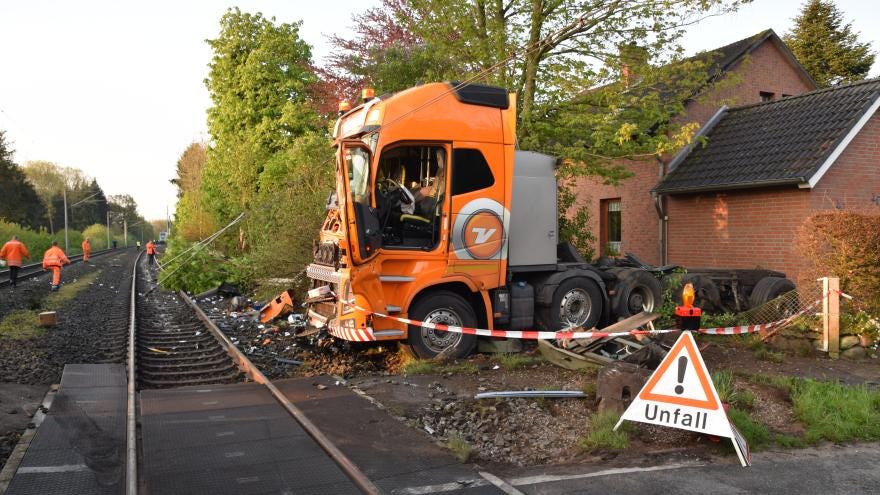
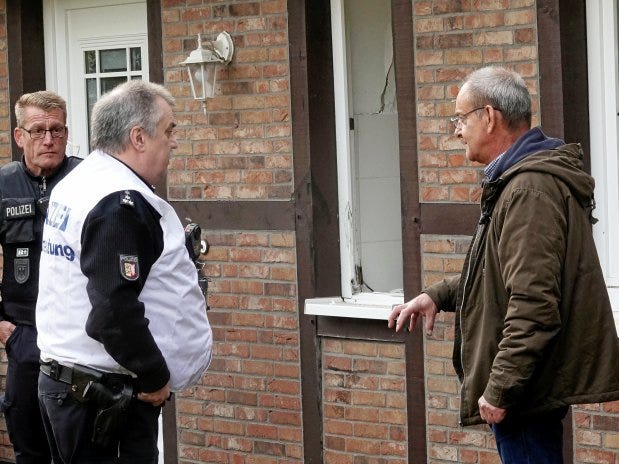
Various residents of the town and passengers aboard the train call the emergency services, it only takes a few minutes for responders to start arriving at the site. RE7’s driver survives the collision with minor injuries and can leave the train on its own once the torn overhead wires are confirmed to be turned off and grounded. The Twindexx-trains are built with the most up to date safety standards in mind, featuring crumple zones and high rigidity survival spaces intended to ensure a sufficient survival-space for the driver despite his position way up front in a relatively lightweight train car. It also helped that the train was nearly empty, carrying just 22 passengers and 2 crew members.
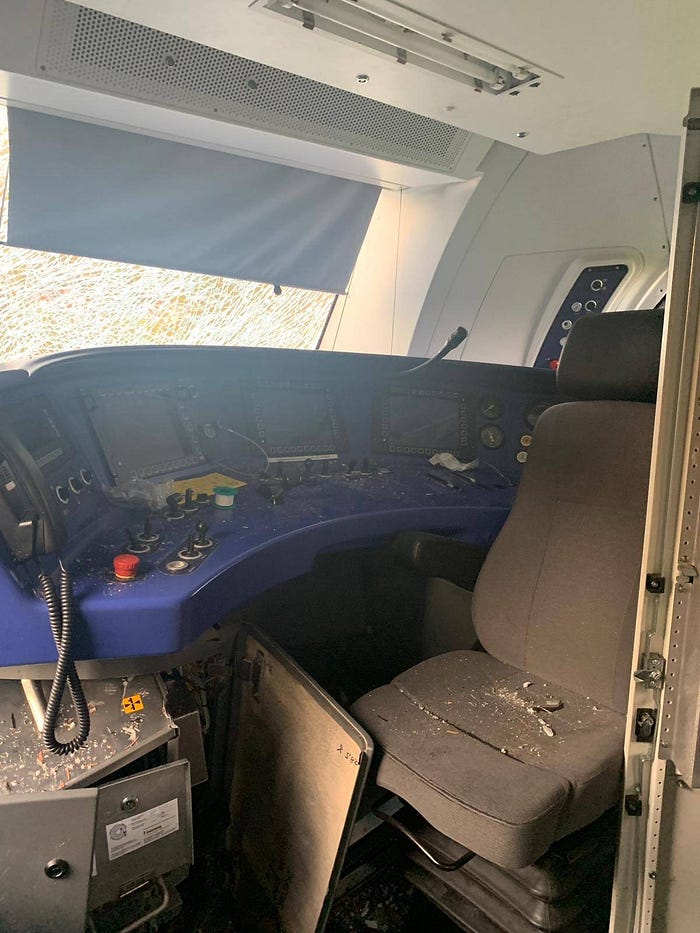
Firefighters on site decide not to wait for the DB’s infrastructure division to get rid of the torn wires, instead choosing to cut some branches off nearby trees and attach the wires to those. By noon the train is empty, most passengers were treated and released on site with only 5 requiring treatment at the hospital, one of whom requiring to be flown to the hospital with life threatening injuries. With records showing that the barriers were open and the train far enough away as the truck approached and no technical defect from before the collision being found on the remains of the truck the investigation soon finds the simple cause. The truck was on the road he was supposed to be on, but should never have been approved to use it. The crossing has a sharp incline both ahead of and between the tracks, making it unfit for a truck like this. This collision wasn’t even the first accident caused by a truck being erroneously routed over it, a few years prior a semi truck carrying tree trunks had been pushed up by the incline so much that it tore down the overhead wires. After that accident the municipality had asked the authorities in charge to please stop sending transports like the one involved in the accident down the road with the level crossing. The truck could’ve been routed to the north around the town, crossing the railway line on the B77 (a federal highway one level below the Autobahn) just 15km/9mi linear distance north of the site on a bridge.

Later in the day the train is placed back on the tracks and towed away and a heavy duty crane is brought in to lift the wreckage of the truck out of the resident’s garden so it can be taken away. Both the truck and trailer are damaged beyond saving and are eventually scrapped.
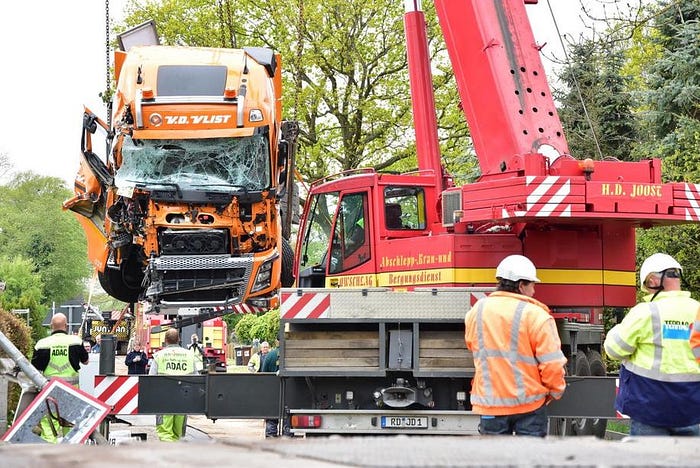
The THW (federal agency for technical relief) puts down steel plates on the Bahnhofstraße so the ramm, which survived the accident nearly undamaged, can leave the site under its own power and be loaded onto a new trailer off-site. The night after the accident the DB starts repairing the tracks and installs temporary barriers, six days after the accident the eastern track is repaired and the overhead wires are reinstalled, allowing it to be reopened at least for freight traffic. According to the DB over 500 sleepers and several hundred meters of rails and overhead wires have been replaced by the time the railway is back to full operation another week later.
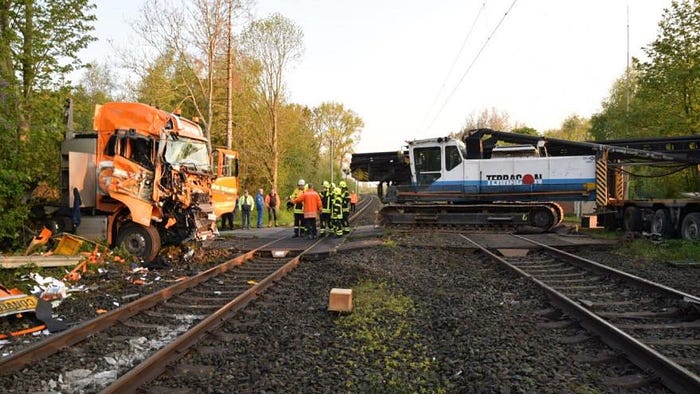
The investigation ends up running out without a responsible individual being named or put on trial as it can’t be proven who exactly decided to route the truck over the crossing unfit for such a vehicle, much less whether or not they did it to provide a shorter route than the detour over the B77 or if they simply forgot that the crossing was unfit for the truck. The DB’s insurance ends up footing the bill for the damages as the trucking company relied on the input given to them by local authorities and can’t be blamed for the consequences. The train is initially stored at Neumünster’s maintenance yard 38km/23.6mi linear distance from the site of the accident. Neither end car has been spotted since, so it has to be assumed that either the end cars or even the whole train were deemed to be beyond saving despite their young age and were stripped for parts before being scrapped.
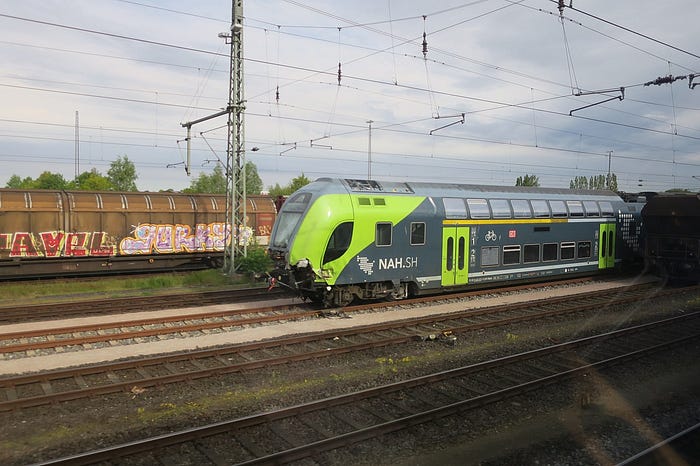
_______________________________________________________________
